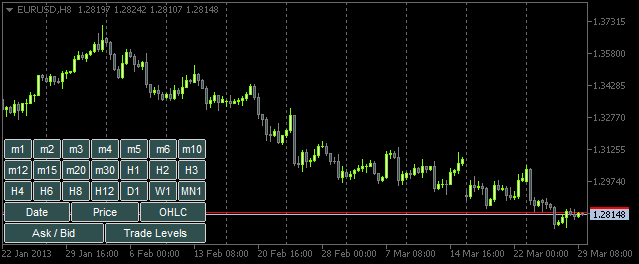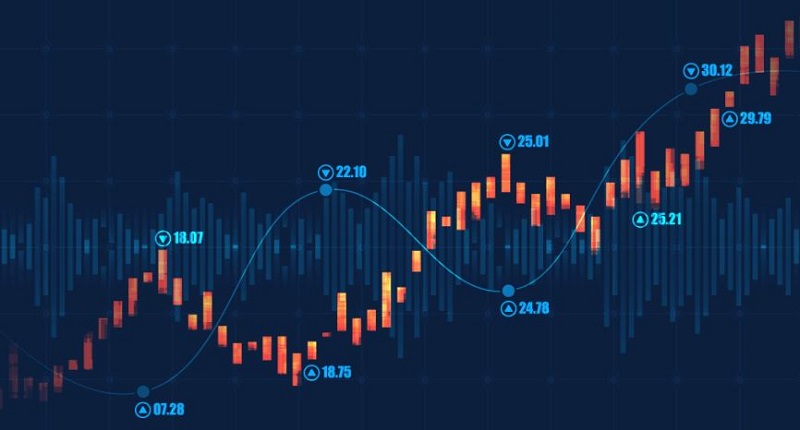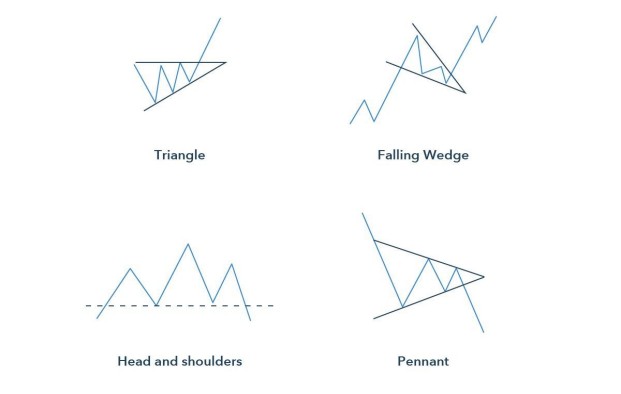

Analyzing timeframe is an important skill for any Forex trader. It involves reading charts and developing strategies to predict market movements. This article will explain what a timeframe is and how to choose the appropriate timeframe for each trading style.
You may concern about:

What is timeframe?
First, let's learn about what timeframe is. Timeframe refers to the period of time that a trader uses to analyze price charts, identify trends, and trading opportunities. Each price chart can display data in various timeframes, such as 1 minute, 5 minutes, 15 minutes, 1 hour, 4 hours, daily, weekly, or monthly.
Different timeframes on the same currency pair give different price directions, which can either benefit or hinder the analysis process. Therefore, it is important for you to have a clear understanding of what timeframes are in order to facilitate your analysis.
Common timeframes in Forex

To further understand what timeframe is, let's explore some common timeframes in Forex. Here are a few popular timeframes in Forex:
- M1 (1-minute): Each candlestick represents 1 minute of trading.
- M5 (5-minute): Each candlestick represents 5 minutes of trading.
- M15 (15-minute): Each candlestick represents 15 minutes of trading.
- H1 (1-hour): Each candlestick represents 1 hour of trading.
- H4 (4-hour): Each candlestick represents 4 hours of trading.
- D1 (daily): Each candlestick represents 1 day of trading.
- W1 (weekly): Each candlestick represents 1 week of trading.
- MN (monthly): Each candlestick represents 1 month of trading.
Different timeframes reveal different aspects of trends and price fluctuations. If you don’t understand clearly what timeframe is, it will become challenging to determine the duration of a candlestick or trading session. It is also difficult to identify the opening, high, low, and closing prices of pairs within that timeframe.
How does timeframe analysis affect trading results?
Switching among different forex trading timeframes has many advantages. Due to the sheer liquidity of the forex market, traders can view very short timeframes and observe meaningful information whereas. Another advantage in favor of forex timeframes includes the 24-hour of the forex market during the week.
Trading during the Asian, European, and US trading sessions exposes traders to a variety of market conditions unique to those sessions. Such as ranging markets during the Asian session and trending markets during the European and US session crossover. By employing several time periods to identify the best entry, traders may take advantage of these distinct market dynamics.
Choose timeframe that suits your trading plan

Once you have an overview of what the timeframe is, let's move on to the next section: How to choose the appropriate timeframe for each trading style. Firstly, you need to determine the trading style that you are pursuing. This is crucial to understand what timeframes are because once you identify your trading style, you can easily determine the suitable timeframe.
In general, there are four main trading styles:
1. Scalping trading
2. Day trading
3. Swing trading
4. Position trading
The best timeframe for trading depends on the type of your trading style. Let's explore them further below!
Timeframe for Scalping trading

For scalping, traders should choose short timeframe from 1 to 15 minutes. Scalping involves holding positions for very short durations. It is suitable for those who prefer quick trades and are comfortable with higher risks.
Invest in the market, keep an eye on its movements, and use trend analysis to determine the best entry opportunity. Then, you can buy a certain quantity of the currency of your choice and watch for a minute-long tick-up. When it increases, you sell your position, keep the gains, and then repeat the process.
Short timeframe allow traders to closely follow and find trading opportunities for quick profits. However, scalping requires high concentration and quick reactions. It is suitable for experienced traders who are master with this trading style.
Timeframe for Day trading
Traders who use day trading tend to focus on short-term approaches. The best timeframe for this trading style from 1 hour to 4 hours. This trading method focuses on opening and closing positions on the same trading day, with the goal of profiting from short-term price movements.
The benefit of being a day trader is that you can choose from a range of different timeframes. It is based on the liquidity of your chosen market, the amount of time you have to make your trades, and your preferred trading strategy.
Using the daily timeframe (D) also provides an overview of long-term trends and trading opportunities based on longer-term signals. Day trading requires observation, quick reactions, the need for good technical analysis skills and risk management.
Timeframe for Swing trading

The best timeframe for swing trading from 4 hours (H4) to daily (D). It can extend to weekly (W) timeframes. Swing trading focused on identifying major trends and executing positions that can last from a few days to a few weeks. Swing traders may respond to price action changes or other technical indicators, or they may apply a stop loss and profit goal to maximize their profits.
Swing trading requires patience and the ability to assess trends. Traders need to perform technical analysis and identify reasonable entry and exit points. Risk management is also an important factor in swing trading.
Timeframe for Position trading
Lastly, we have the Position trading style. True to its name, traders in this style will hold a position with the expectation that its value will increase over a specific period of time. These traders won't enter many orders. They have the ability to work within a very long-term timeframe in several weeks, months, or even a year.
Unlike traditional "buy and hold" investors, Position traders don't simply lock in their funds indefinitely. They are individuals who value safety and find long-term profits. Suitable timeframes for this trading style are D1, W1, or MN (monthly).
Multiple time-frame analysis

If you already understand what timeframe is and the timeframes that correspond to each trading style, let's come to the more interesting part. It is a combination of timeframe to have a better overview of the direction of the price.
The longer timeframe can be used to establish a trend, while the shorter timeframe can be used to identify ideal entry points into the market. Then, to enable an in-depth investigation of the market patterns, a medium-term might be offered.
This method allows you to analyze charts on short, medium, and long timeframes to identify price patterns, trends, and trading opportunities. By combining information from different timeframes, you can determine larger trends and entry/exit points more accurately.
For example, a trader can use a larger timeframe like daily (D) to identify the primary trend, and then switch to smaller timeframes 4 hours or 1 hour to search for specific entry points. By analyzing trades across multiple timeframes, you can increase your win rate and make more precise trading decisions.
However, it's important that trading analysis across multiple timeframes requires skill and experience to understand and interact with different charts. Each trader may have their own method of applying this analysis and customize it to fit their trading strategy.
Conclusion
Your questions about what timeframe is answered in this article. Hopefully, with the knowledge of what timeframe is, you will know how to choose the appropriate timeframe for your trading style. Apply these principles to your trading analysis and practice them regularly. You will see greatly improved results.
Follow the FXCE latest news and updates at the following channels:
Facebook | Telegram | Instagram | Youtube



